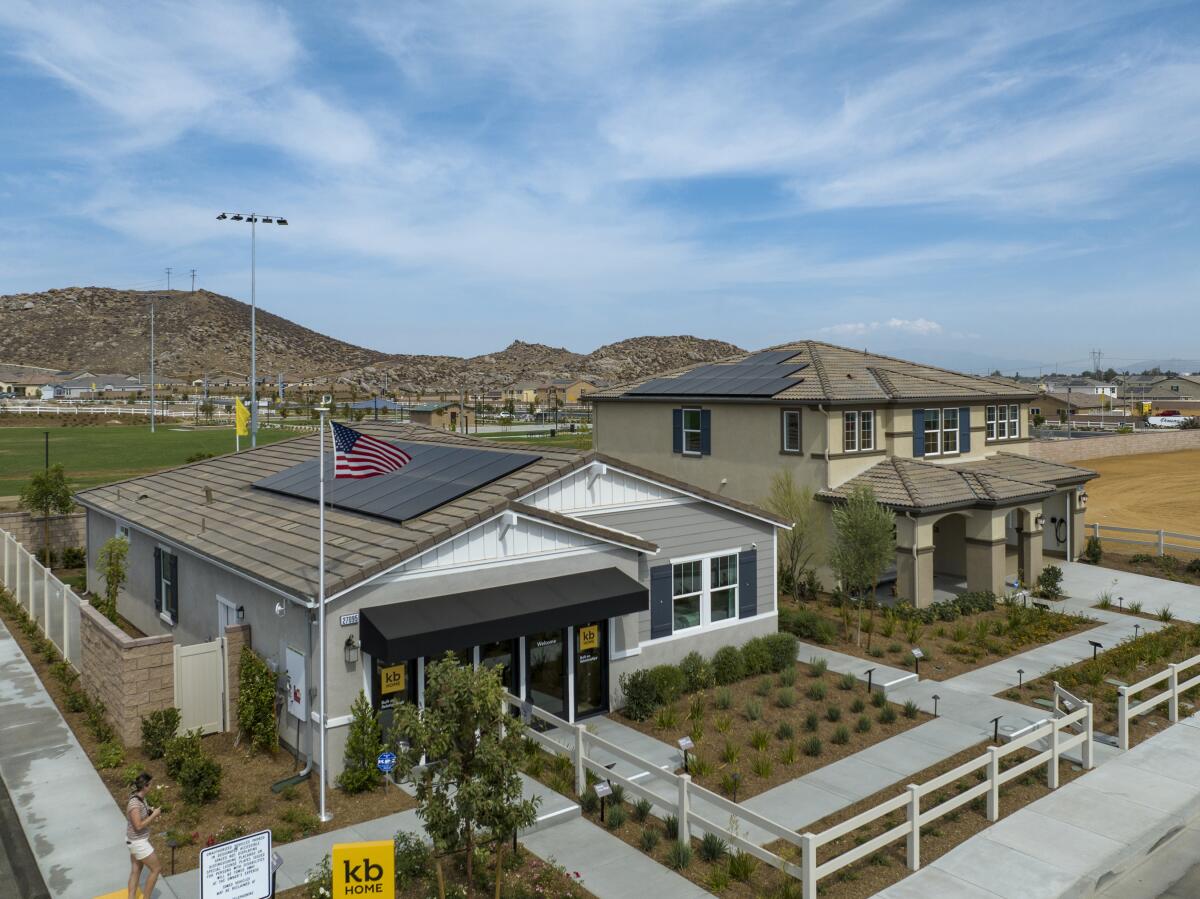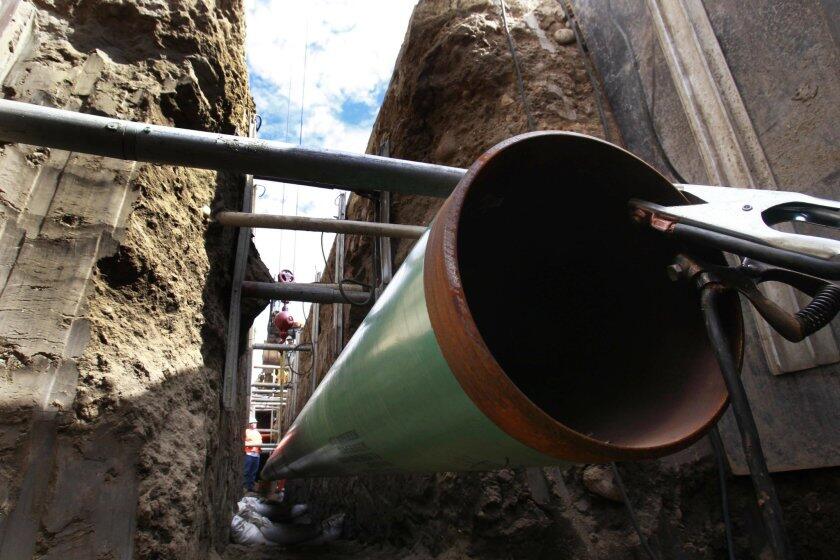Looking for Inflation Reduction Act rebates to go green? Get ready to wait

- Share via
For Americans with a New Year’s resolution to trade in their gas furnace or water heater for climate-friendly heat pumps, a word of caution: Generous Inflation Reduction Act rebates for home electrification took effect on Jan. 1, but they won’t actually be available to homeowners until year’s end or 2024 at the earliest, according to the U.S. Department of Energy.
That’s because the Biden administration is distributing $4.3 billion in home electrification rebates through state energy offices. In other words, 50 different programs need to be designed and implemented so that they comply with federal regulations, which reserve the incentives for families earning up to 150% of their area’s median household income.
The good news is that rebates worth up to $14,000 to slash the cost of decarbonizing a home are expected to be available for years to come, at least until the budget runs out.
The bad news is that if your fossil-fuel furnace or water heater fails before state programs are up and running, the rebates won’t be retroactive. That means homeowners could lock in another decade or two of greenhouse gas emissions if they can’t afford unsubsidized heat pumps.
“Given that states must establish programs that ensure compliance with the law (e.g., eligibility of household, technology, program reporting), it will be difficult to offer rebates for projects completed before program requirements are fully defined and programs are in place,” the Energy Department’s Office of State and Community Energy Programs says on its website. It adds: “The law does not authorize states to offer home electrification rebates retroactively.”
Debate over a potential nationwide ban of gas stoves has heightened health concerns. Here’s what the research really says about stove pollution and human health.
The Inflation Reduction Act also includes a $2,000 federal tax credit for heat pumps, which can be taken now. Some states and utilities also offer their own rebates.
But the full implementation of various programs to encourage adoption of green technology is still being ironed out, including tax credits for electric vehicles and rebates for home efficiency upgrades. A 30% tax credit for residential solar and battery storage systems is in effect.
When it comes to the Inflation Reduction Act’s home electrification program, the rebates can be significant.
They include an $8,000 rebate for heat pumps that can warm and cool homes, an amount that could cover roughly half the installation costs of some systems. There’s also a $1,750 rebate for heat pump water heaters, $840 cash back for induction stoves and heat pump clothes dryers and $4,000 for electrical system upgrades.
The federal government wants the rebates to be deducted from the price of heat pumps and other high-efficiency electric appliances at the time of sale.
SoCalGas customers are paying sharply higher January bills because wholesale gas prices have jumped. Yet other parts of the U.S. are seeing prices fall.
Getting a substantial instant discount would simplify electrification for homeowners and widen its appeal. But that means a system must be put in place for a contractor, a state energy office or another entity to verify that a buyer’s income qualifies for the incentives.
On Jan. 18, the Energy Department issued a request for information to the states, soliciting their input on federal guidelines for designing state programs to distribute the rebates. This summer, the agency will issue those guidelines; then states must submit their proposed programs for approval. The law gives states until August 2024 to start handing out the rebates or lose the funding.
“DOE has just taken the first step in a long process of getting these programs designed and those rebates flowing,” said Alisa Petersen, federal policy manager for the U.S. program at RMI, a nonprofit organization that promotes decarbonization. “I think that 2024 is actually a goal for distributing the rebates and not necessarily something that everyone should be relying on, especially in states that maybe are less excited about electrification or just don’t have a state energy office that is super well-staffed for efficiency programs.”
“There could be electrification projects that could happen right now, that won’t happen because that funding isn’t available yet,” she said.
The Energy Department did not respond to interview requests.
The rise in natural gas prices is a good reason to conserve energy, switch to efficient appliances or ditch natural gas altogether.
California, the nation’s largest market for heat pumps and heat pump water heaters, is just beginning a lengthy undertaking to establish its own Inflation Reduction Act rebate program, a procedure that includes holding public workshops.
“The process for distributing … rebates in California has not yet been determined,” the California Energy Commission said in a statement. “Rebates are anticipated to be available to consumers in 2024.”
The complexity of implementing Inflation Reduction Act rebates could prove a deterrent for the contractors needed to handle electrification upgrades, said Nate Adams, a home electrification expert and chief executive of HVAC 2.0, which helps contractors optimize their installation business. “There will be 50 sets of rules, so frankly we don’t expect a lot of contractor participation,” Adams said.
That tension makes it particularly important that the state programs be designed well, said Ari Matusiak, chief executive of Rewiring America, a nonprofit that advocates for community electrification. “These programs need to be structured correctly so that they function well in the market and are not difficult for contractors and consumers to understand and use,” he said.
For now, Matusiak counsels patience.
“This is the biggest climate investment in the history of this country,” he said. “It’s going to take some time for people to become aware of it and know how to use it.”
More to Read
Inside the business of entertainment
The Wide Shot brings you news, analysis and insights on everything from streaming wars to production — and what it all means for the future.
You may occasionally receive promotional content from the Los Angeles Times.













